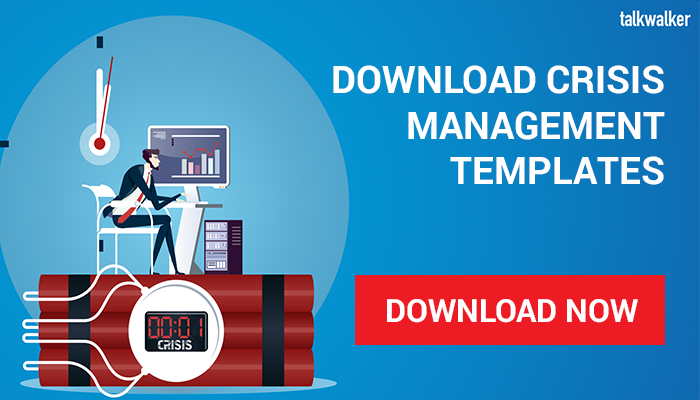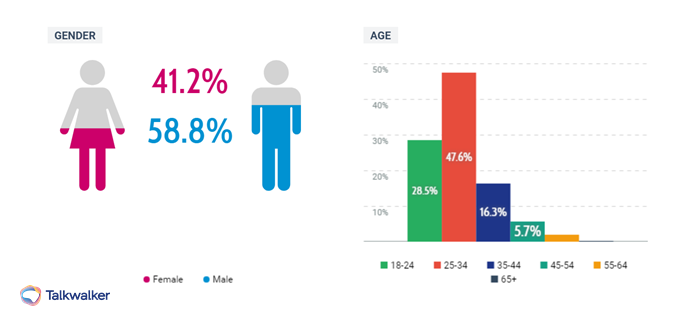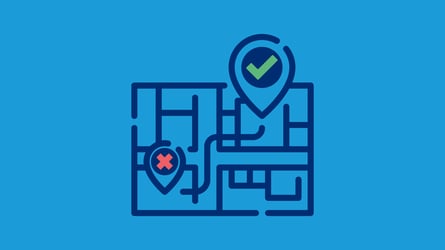Before you begin any kind of marketing or advertising campaign for your brand, it’s essential to identify the audience that you are targeting. Knowing what your ideal customer looks like - such as what they like to do, where they’re from, what they value, and what they spend money on - will help you understand the best way to speak to them and solve their problems.
Performing an audience analysis doesn’t just help you create the right message in the moment. It will give you insight into how your customers operate so that you can craft your marketing and brand strategy around them, and create buyer personas that you can apply to new campaign and product launches. With 44% of brand marketers reporting that creating a personalized customer experience is their top priority in 2020, it’s more important than ever to know your audience inside and out.
There are a lot of factors that should go into your audience analysis. While you can target a specific type of analysis to perform depending on what you want to know about your customer, it’s best to incorporate data points from across the board when creating a holistic marketing strategy for your brand.
In order to reach your ideal consumers, here are four basic types of audience analysis that will help you understand their needs and build your messaging around them:
1. Demographic Analysis
Most buyer personas have a demographic analysis at their core. You need to know the basics about your audience - how old they are, where they live, what they do for a living, etc. - in order to create any kind of messaging for them that will resonate.
Data points like average age and gender are a great place to start when understanding what your ideal audience member looks like. You can use consumer insights tools to analyze your brand’s followers and advocates to understand what is most important to them.
For example, the data below about a media brand’s audience shows it skews millennial male. That insight can help them identify types of content to produce as well as advertisers to target:
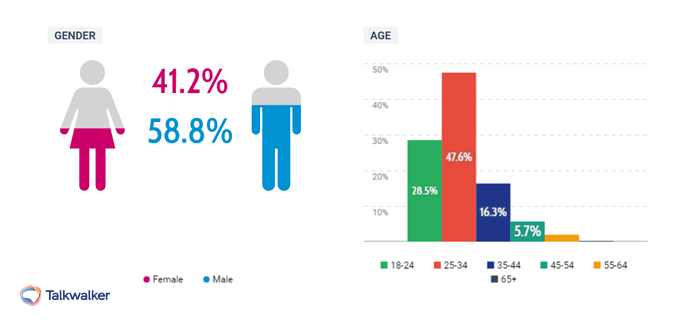
Develop your core demo with basics, like gender and age data.
You can drill down even further by examining the kinds of jobs your audience has - occupational info will help you understand your audience’s lifestyle and what drives them. It can also tell you if your messaging is reaching the types of professionals and organizational decision makers that you want to get in front of.
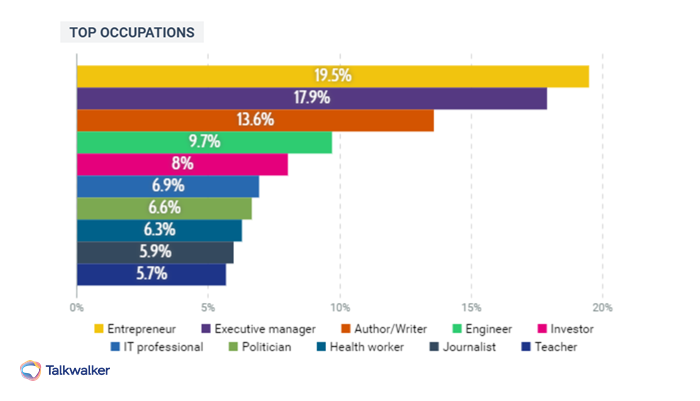
Info about audience members’ job titles can help you identify everything from their daily priorities to their average annual HHI.
Of course, location plays a huge role in defining your audience persona. Geography can have a big impact on your brand’s seasonal performance, as it often dictates how active people are, what kinds of products they engage most with, and even what time they’ll be online.
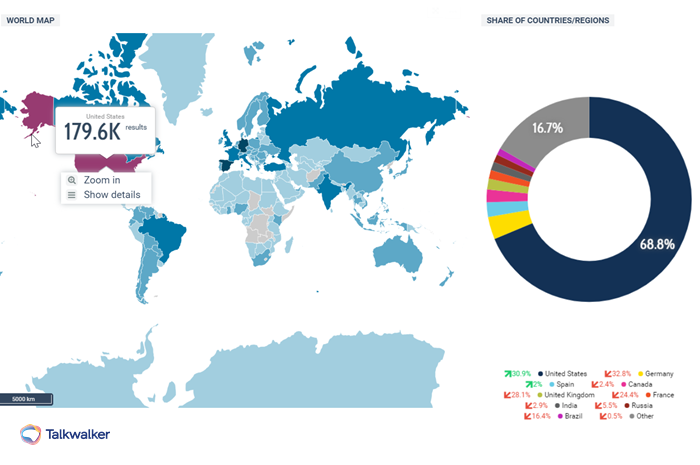
Audience data around location and language is essential for marketing localization efforts.
Regional trends can show you if your audience is saturated in a specific area, and can help to define localization techniques to ensure that your message is relevant and landing the right way.
DOWNLOAD FREE CONSUMER BEHAVIOR AUDIT TEMPLATE
2. Behavioral Analysis
Gaining insights into your customer’s behavior will help you understand their mindset and the most effective ways to put your brand in front of them. By knowing what they like to do, how they get (and share) information, and when they are most active you can target your audience with content they want to see in the moment that they’re most likely to respond.
Track your audience’s top interests so that you know what they enjoy doing and learning about most. You can use these insights to inform your brand’s marketing and content strategy or your next campaign so that you can create stories and resources that they’ll find both interesting and valuable.
For example, let’s say that you’re an active lifestyle brand whose audience’s interest breakdown looks something like this:
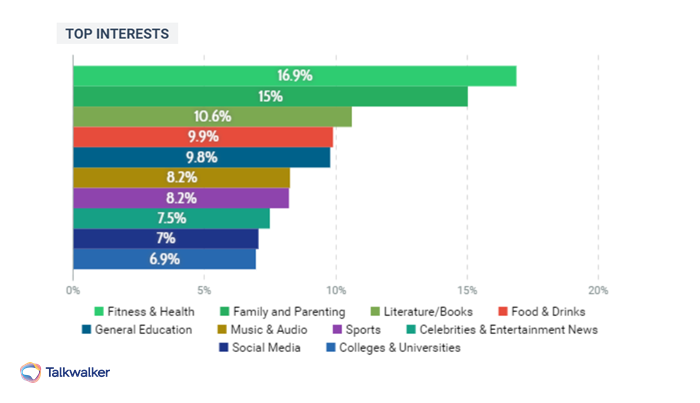
This data around interests shows that “fitness” and “food” content is definitely a safe bet for this group.
You know that there are certain niche topics that your audience is more likely to respond well to than others. Based on the data above, you can assume that they’ll engage with a blog post that tells them about the best post-workout smoothie recipes, but not necessarily one that talks up athletic equipment.
This knowledge helps to frame your marketing message in a way that will resonate more with your audience so that you’re giving them info they’re interested in.
Tracking what kinds of devices your audience uses is also important. Are they typically looking at news and social media on their phones, or are they browsing desktop sites during the work day? Customers may be looking at different kinds messages of depending on what they’re viewing it on, so device data can play into your messaging strategy:
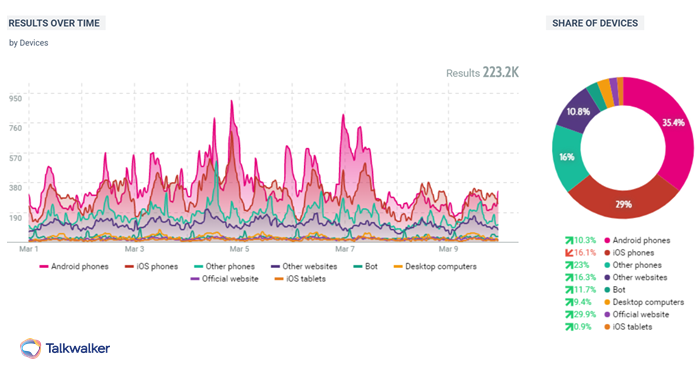
This device usage report show that phones are much preferred to PCs - a mobile-friendly audience.
By using device tracking, you can see if your customers live on mobile platforms and will therefore typically look at more short-form content like in the above data visualizations. This can help inform where you are publishing branded content, how you’re spending your ad dollars, and what kind of marketing initiatives will resonate best because of where they’re being seen.
Using social intelligence techniques to overlay your demographic analysis with your behavioral analysis will really help you understand trends in your audience’s buying mindset.
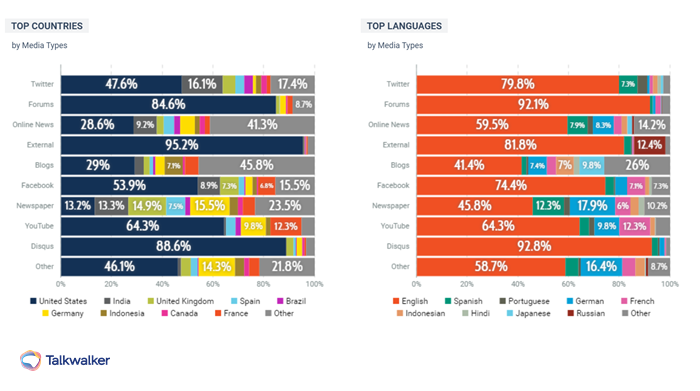
Compare reporting on device usage across countries and languages to better hone regional marketing strategies.
3. Competitive Analysis
Seeing what people are saying about your competitors is another lens to frame your audience analysis through. It will give you great insight into overall industry trends, and it will also help you see where there are opportunities for your brand to set itself apart.
Analyze your competitors’ social channels to track who your audience members follow, where their common messaging lies, and the sentiment around their opinions on your rivals. An analysis of two regional fast food chains shows more than just an East Coast-West Coast beef - share of voice for their burgers is pretty cutthroat, too.
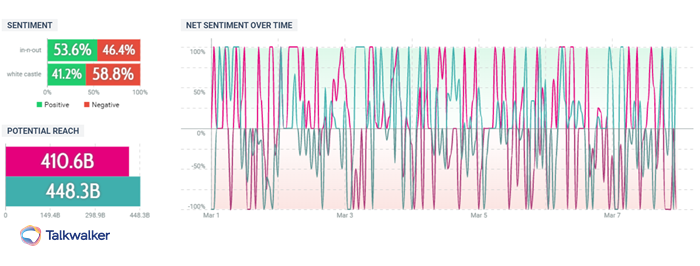
A week’s reporting for competing US burger chains show spikes in sentiment for both.
Keeping tabs on competitors will allow you to take advantage of conversational trends and be there to answer questions about how you can meet the needs of audience members that other brands in your space can’t.
Compare sentiment drivers between your brand and competitors to get inspiration for everything from hashtag campaigns to product feature enhancements.

Emoji trendspotting helps with both content ideation and issue tracking.
Track the most influential posts (and posters) that mention you or your competitors so that you can see who’s talking about you online:
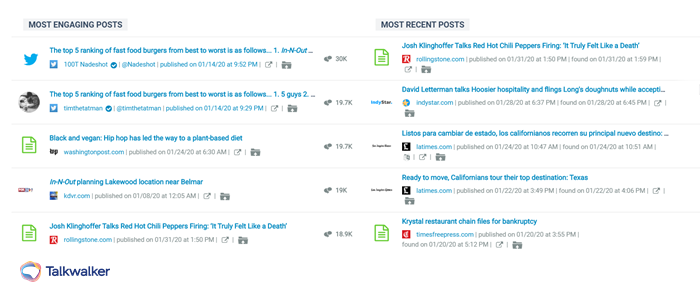
Compare posts with the most engagement and recent mentions to see where loyalties lie.
That way, you can be proactive about your marketing strategy and look at how people are talking about your product space from all sides. It will also help you set up real-time alerts for influencer mentions in the future so that you can have a say in the conversation.
DOWNLOAD FREE CONSUMER BEHAVIOR AUDIT TEMPLATE
4. Media Analysis
Finally, by examining where your audience gets their news, advice, and reviews you can understand who they trust and how they digest information. The types of social platforms that your audience uses the most can tell you a lot about what they value and how they spend their time.
Knowing the websites they visit, publishers they read, foods/brands they love, and stories they follow will help you establish a connection with them. See which platforms are getting you the most engagement week by week so that you can plan your marketing accordingly.
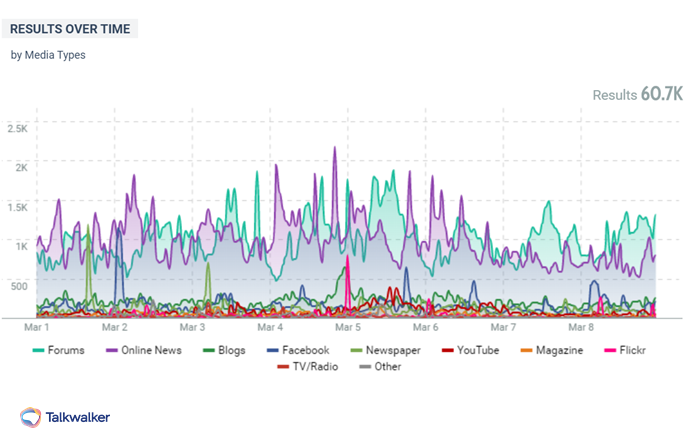
Reporting on media usage indicates the most active times of the week.
If you notice a trend in your audience members’ Facebook activity, for example, spiking during certain days or times, then you can use that insight to help structure your editorial calendar. You can also stack that info up against your demographic and seasonality data to establish the best time to schedule paid media that your target audience will engage with the most.
Influencers also play a big role in media consumption, both on and offline. Oftentimes the products, organizations, and people that your audience sees their favorite influencers supporting online will drive their interest in real life. Familiarizing yourself with the public figures that your target audience is following will help you gain insight into the voices they listen to and the messaging elements they appreciate most.
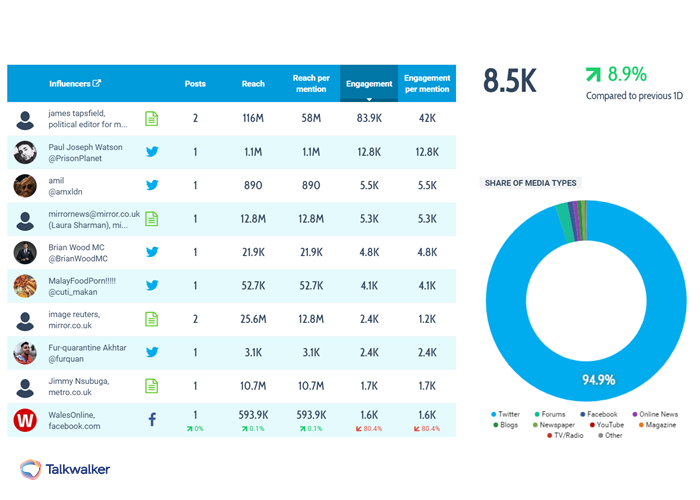
Track influencer engagements, mentions, and reach for your brand.
You can even use this kind of media analysis to help build out strategies for partnership opportunities with macro, micro, and nano influencers in your space.
To summarize, there are four types of audience analysis you should consider when building buyer personas:
- Demographic analysis: basic audience info like age, gender, location, and profession.
- Behavioral analysis: data around audience members’ interests, hobbies, and preferences.
- Competitive analysis: insights around your competitor’s products, share of voice, and common market interests.
- Media analysis: reporting on top platforms, publishers, and influencers that your audience uses and trusts.
Performing an audience analysis helps to create a more consumer-driven marketing strategy that will ensure you’re taking into account not just what potential customers are saying about your product, but your overall market. Using this audience analysis framework will put you in the right position to establish your core customer personas, and to build them out for each stage of your buyer journey.
